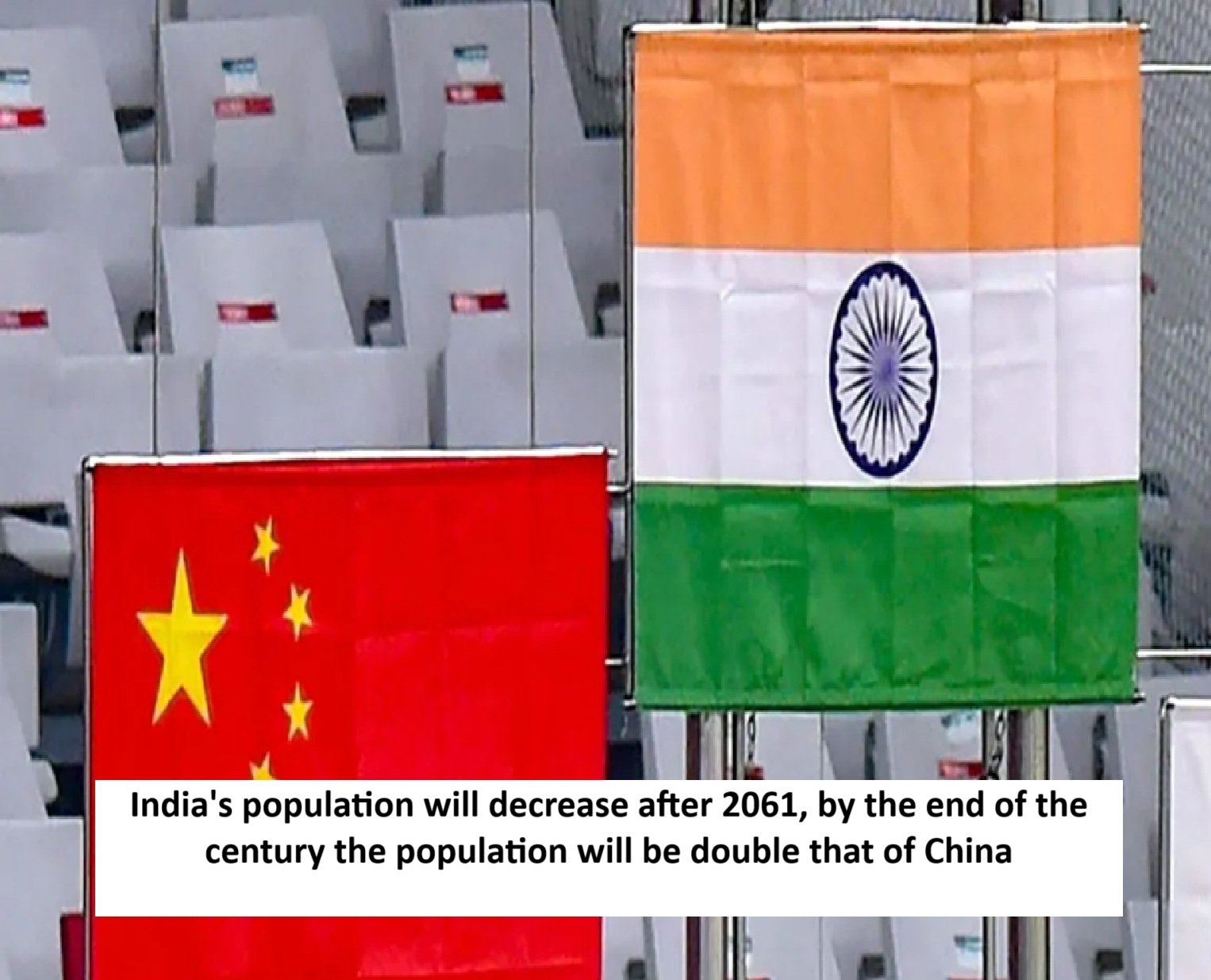
News Topical, Digital Desk : India's population will see very important changes in the coming years. According to a recent demographic report by McKinsey and the United Nations' World Population Prospects 2024, India's population will reach its peak in 2061 at 1.7 billion, after which it will start declining. But despite this decline, India will remain the world's most populous country till the end of the century. It is estimated that by 2100, India's population will be 1.5 billion, which will be more than double the then population of China (633 million).
Population will reach 1.5 billion in 2100
According to a McKinsey report, India's fertility rate is 1.98 children per woman, which is below the replacement rate of 2.1. A UN report shows that India's population will grow to 1.69 billion in 2054 and after reaching a peak of 1.70 billion in 2061, will gradually decline to 1.5 billion by 2100. On the other hand, China's population is 1.41 billion in 2024, which will shrink to 1.21 billion by 2054 and to 633 million by 2100. This decline is due to China's ultra-low fertility rate (1.14 children per woman). According to UN estimates, China's population will decline to 204 million by 2054 and to 786 million by the end of the century.
India will face many challenges
The McKinsey report warns that the growing number of elderly people in the population will put pressure on India's economy. By 2050, there will be only 4.6 working people for every elderly person, compared to 10 now. By 2100, this ratio will reach 1.9, which is similar to the situation in Japan today. This will increase the burden of caring for the elderly on the government exchequer and families. Apart from this, from 1997 to 2023, India's young population contributed 0.7 percent to the growth of GDP per capita every year, but by 2050 this contribution will decrease to 0.2 percent.
India can deal with challenges on the strength of women
The report suggests that India can tackle this demographic challenge by increasing women's labour force participation, which is currently only 29% in the age group of 20-49 years. This figure is 50-70% in other emerging economies. Along with this, India's share in global consumption will increase from 9% in 2024 to 16% in 2050, which will further increase India's global importance. It should be noted that India's population structure is still young compared to China. In 2024, India's average age was 28.4 years, while China's was 39.6 years. By 2100, India's average age will be 47.8 years and China's will be 60.7 years.
India will have to take some big steps
It is time for India to turn its demographic strength into economic power. Experts believe that by improving education and health services, providing more employment opportunities to women, and adopting technological innovations, India can maintain its position at the global level despite the decline in population after 2061. If India takes the right steps from now, it can not only take its economy to great heights, but can also play a strong role on the global stage with a population twice that of China by the end of the century.
--Advertisement--

 Share
Share



